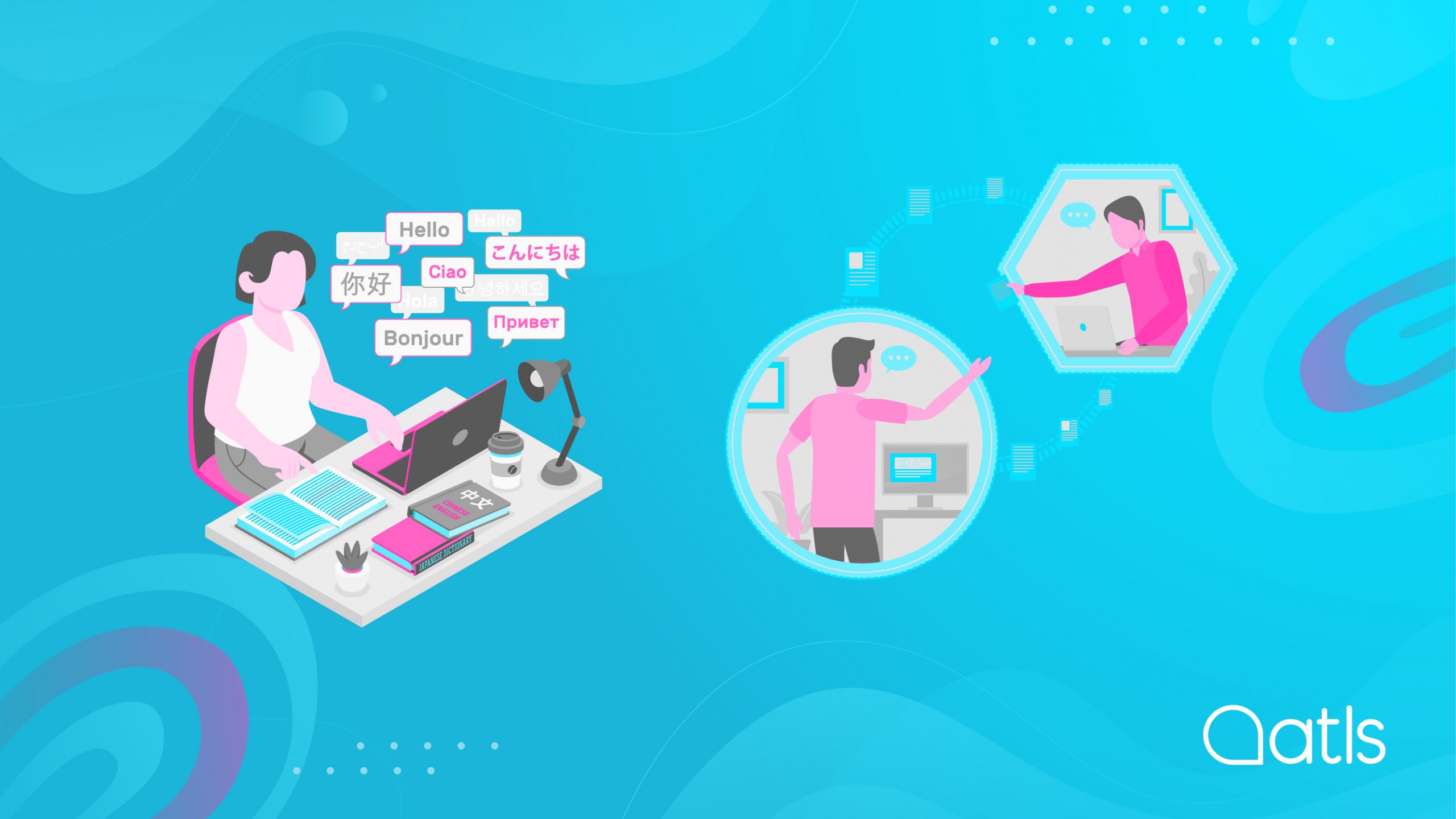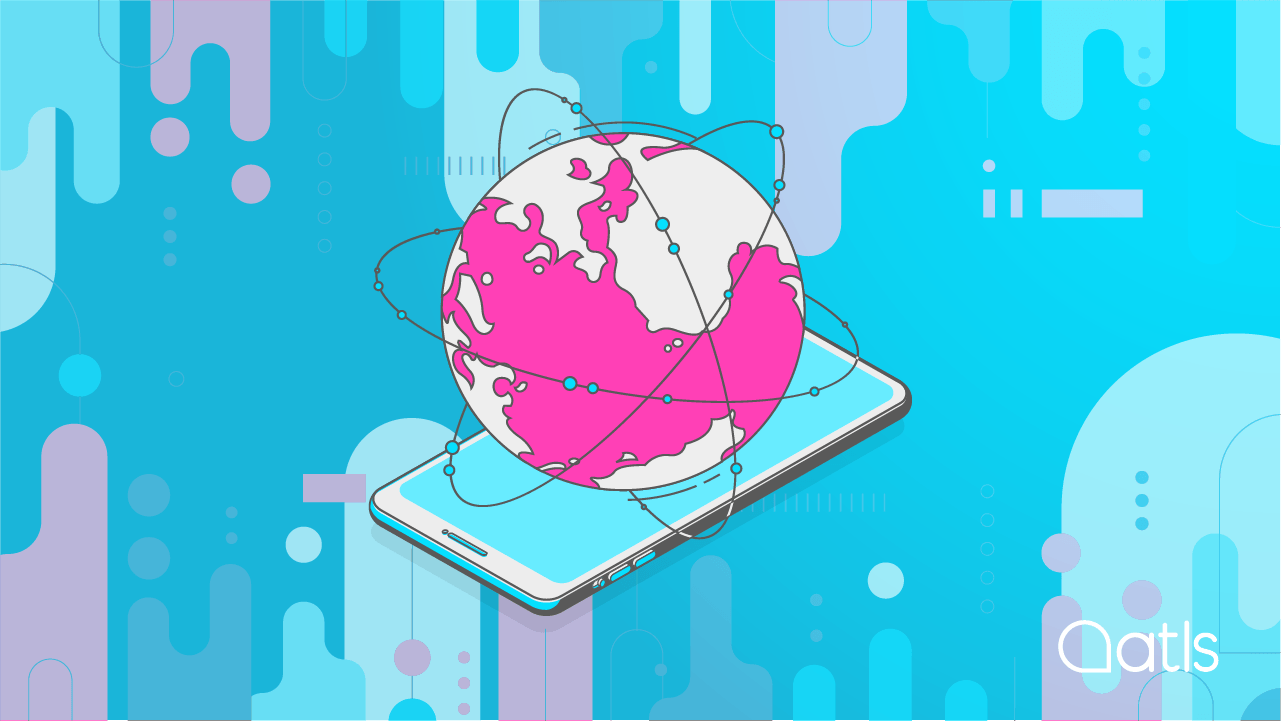Is simultaneous translation the same as simultaneous interpreting?

Although the term 'simultaneous translation' is widely used to refer to translating a spoken message at the time of it being uttered, that's actually not quite right; strictly speaking, this is called simultaneous interpretation. What's more, it's an activity that requires specific technical and technological resources, not to mention a huge amount of preparation and effort on the part of the interpreter. These days, there are three main areas of simultaneous interpretation: online voice translators, AI for remote machine translation and professional human interpretation (same as always) using a booth, microphone and headphones.
Contents
- What is simultaneous translation?
- Simultaneous translation = simultaneous interpreting
- How does simultaneous translation work?
- What methods of simultaneous translation are there? Which of them gets you the best results?
- When should you opt for simultaneous translation services?
- Our advice
- What's the best simultaneous translation service?
Have you got a conference series on Japanese film coming up? Or a presentation on a product or service for an Arab sheikh? Or maybe some user experience research for the Indian market? In that case, it's likely you'll need simultaneous translation services... Or should we say simultaneous interpretation?
Let's tackle this common question first. And now you're here, we may as well explain to you - in short and sweet terms - what this activity entails. So, let's look at a rundown of how it's done and the three main types used today. Ready?
What is simultaneous translation?
In theory, the definition is clear. Simultaneous translation has traditionally been understood as an act of linguistic mediation; the translator transmits the meaning, sense and intention of an oral message from one language to another. It's taken as a given that this is done immediately: in other words, the translator translates the message at the same time as the person speaks, making the speech as fluent as possible.
This discipline and its spoken 'sisters' - consecutive interpretation, whispered translation and bilateral translation - have always been (traditionally, at least) face-to-face in nature: The translator must be physically present, seeing both the speaker and the listener. To be more precise, in simultaneous translation the translator will be in a booth, listening to headphones and translating by voice via a microphone.
Of course, in the world we live in, where everything happens instantly, there's more scope than ever for confusion. What we're saying here is that back in the olden days of analogue, there was a sharper distinction between oral (voice) and written (text) forms. These days, the borders are blurring. We use instant messaging, audio, streaming, subtitles and automatic translations, going as far as instant translation.
Is there a difference between simultaneous interpretation and translation?
No, there isn't. Strictly speaking, the term 'simultaneous translation' is incorrect. 'Rather, the term 'simultaneous interpretation' should be used to refer to the translation of an oral message. But in practice - outside of specialist, professional circles at least - the two terms are often used interchangeably. In fact, it's standard, so...
Simultaneous translation = simultaneous interpreting
So there you go. Let's make sure we're understanding each other (that's the main thing, right? 😉), and from now on, simultaneous translation and interpretation are one and the same.
How does simultaneous translation work?
Let's crack open the can of worms. To start with, simultaneous interpretation (which is the same) demands a degree of technical preparation. First, on the part of the interpreter: they need to gather information, study the topic they'll be working on, familiarise themselves with the common terminology, etc. And then there's the preparation and installation of the sound transmission system: mainly a sound-proofed cabin, a listening and speech control panel and wireless receivers.
But aside from the equipment (which is far from unimportant; we'll get to that later), in simultaneous translation the interpreter needs to fully internalise both the source and target languages, requiring high levels of concentration and next-level summarising skills. In fact, the mental strain is such, that interpreters work in pairs if a session lasts more than thirty minutes.
Let's imagine a Spanish executive is giving an hour-long presentation to a British audience of about fifty people. They will need simultaneous translation in English, with two interpreters who speak Spanish and English. Due to the number of participants and duration of the presentation, it can't be relayed out loud - that could risk the event lasting two hours (not to mention croaky voices).
What methods of simultaneous translation are there? Which of them gets you the best results?
In our presentation example, all this talk of simultaneous interpretation sounds complex and expensive... But luckily, today there are several alternatives for simultaneous interpretation. There are pros and cons to each type of interpretation, depending on your circumstances, needs and resources.
Online simultaneous voice translator
Meet the online voice translators; in other words, apps that receive an audio message, recognise it, translate it automatically and emit the translation in an audio format. It's like having a simultaneous translator in your pocket. This type of technology has been with us for a decade, and it's getting more refined by the day.
But (just like a decent machine translation) it has its flaws and limitations in terms of your audience size. Let's get back to our example; like it or lump it, you'll need to download a simultaneous voice translator app, and in a roomful of fifty Brits, that's hardly practical. But if you're planning a weekend city break to a foreign country, it's perfect!
Simultaneous translation AI
Yes, it's happening. Artificial intelligence based software that carries out automatic simultaneous translation functions is now starting to emerge. These are powerful tools if you need to translate a live conference on the internet, for example. 'Conversation translators' tend to include subtitling options, and - for the time being - they're seen as a complement to professional simultaneous interpretation.
This type of simultaneous interpreting is definitely gaining ground, but it's still stumped by certain common errors (polysemy, cultural references, rare grammatical structures, technical jargon, etc.). Not to mention the lack of human naturalness. Humans represent significant added value (let's face it, 'machine accents' grate on a lot of people). But it's food for thought if you can let these deficiencies go.
Professional simultaneous interpreting team
Working with a human professional is still the best method of simultaneous translation for larger, specialist audiences at a certain level. Their experience and capacity to adapt to different contexts and situations is unrivalled. Going back to our example, they would be able to navigate any strong accents or off-topic questions from VIP guests at your presentation.
Just as we've seen in other 'automatic' methods of simultaneous interpretation, you'll need specialist equipment. This could mean the classic combination of an interpreter console, floor channel, wireless receivers, etc., but in the present, you can use remote simultaneous interpretation (RSI) that harnesses the powers of a digital platform instead. In both cases, hiring simultaneous translation equipment is standard.
When should you opt for simultaneous translation services?
At the start of the article, we touched on some of the many occasions on which you might need simultaneous interpreting. This type of translation could come into play in the following cases:
- International institutional events (multilingual)
- Company conferences and meetings
- Educational, scientific and academic seminars or webinars
- Speeches from public figures
- In circumstances requiring medical or legal assistance
- Commercial or marketing events
Broadly speaking, any time you want to communicate with an audience who don't understand your language - or any time you want your communications to be effective, faithful and accurate - you're going to need the help of an interpreter.
And as we mentioned earlier, the type you go for will very much depend on your circumstances. If you'd like to clarify your needs, ask yourself these questions:
- What's the objective behind the event?
- How many languages will be involved, which will be 'spoken' and which will be 'listened to'?
- How many speakers and attendees are you thinking?
- Will communication be one-way or two-way?
- Is it a formal or informal event? What type of venue/space is it? How long will it be?
- Will you be tackling any sensitive, confidential or culturally sensitive issues?
The first thing that comes to mind is that if you're organising any type of international event, it's important to offer listeners the opportunity to hear the speaker in their native language. This ensures the message will get to them live and direct, right to the heart.
In events of this magnitude, you need to think about it in advance. Finding a simultaneous translation service to suit your needs isn't as simple as it may seem. Maybe you're thinking about using an automatic or AI-driven simultaneous translation? Remember, they're (still) not reliable. Your best bet is to work with an agency with experience in simultaneous interpretation; one that 100% understands your needs - and adapts to them.
One of our customers at ATLS is a well known tech firm our readers will have heard of. They hold numerous monthly (if not weekly) workshops with their distributors to present new products. And they always hire a simultaneous translation service. It means the people who sell their products understand them perfectly, which is all the more important when technical aspects of the products are so fundamental.
So, get ready for your international event in plenty of time... and we'll take care of the rest!
What's the best simultaneous translation service?
It might sound like a cliché, but the best simultaneous translation is one tailored to you.
Of course, it's now over to you to approach a professional and specialist simultaneous translation agency with the right experience and resources. At ATLS, we've worked on simultaneous translation in Barcelona and worldwide for almost a quarter of a century, always taking an international approach. Get in touch, and we can help you work out what exactly you need and give you the most effective solutions.






